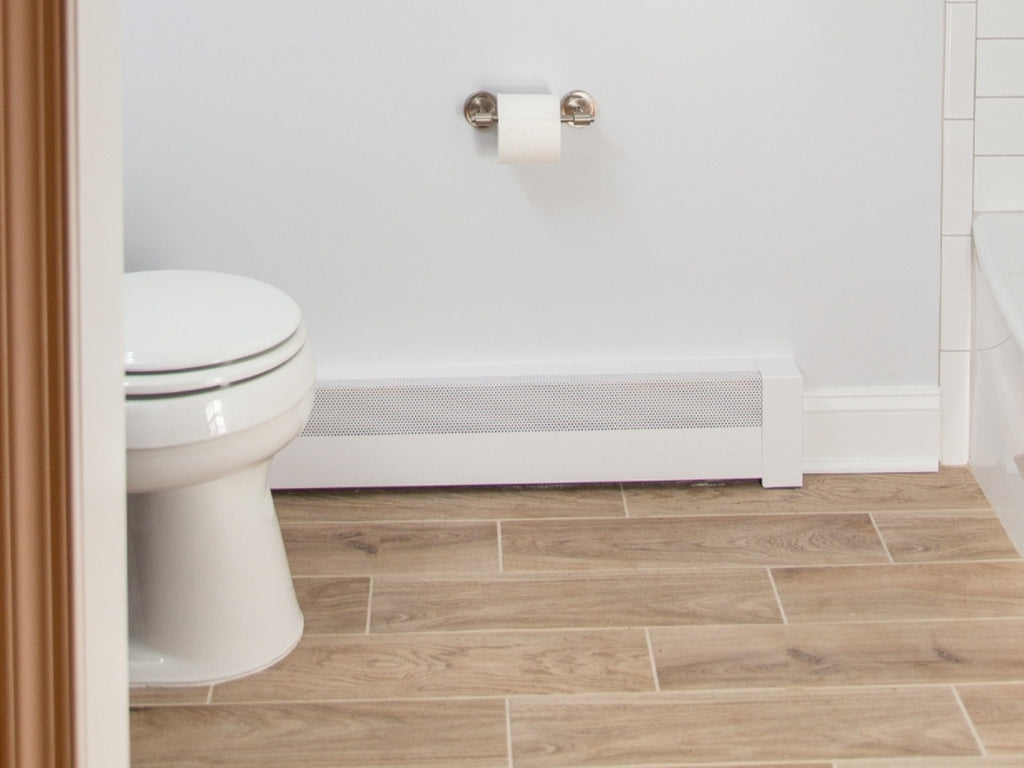9 Things You Should Know About Maintenance on Baseboard Heaters

No matter the season, it won’t be long before you’re adjusting that thermostat up or down for the change in the weather. It's the perfect time to give some thought to the maintenance of your baseboard heaters.
You already love your baseboard heat because it’s so efficient and clean running. You probably also love it because it’s not particularly demanding. However, it does need some regular maintenance and now’s the right time to make sure it’s in top shape. Here’s what you need to do and when.

Check the Boiler or Furnace Once a Year
It’s easy to ignore the boiler and furnace. They run behind the scenes and keep things warm until they break—when you very much become aware of them. Most of the time, problems with the boiler or furnace are a result of wear and tear. It’s easy to keep them running well if you give them a check up annually.
Look the unit over for calcium deposits or rust. These both can be harmless spots you can clean up easily, but they can also be indicators of a bigger problem. Buildup of mineral deposits cause the boiler or furnace to overwork, which will result in a shorter lifespan, higher bills, and eventual breakdown of the unit.
Call a qualified professional to give your unit a checkup every year. Clean up any buildup yourself as it occurs and mention it to the technician at your next visit.
Bleed Air Once a Year
Air gets into the hydronic system and can cause it to work less efficiently. Bleed the air out yourself by locating the valve and opening it to let air escape. Close it once only water is coming out. Place a towel under the valve to catch any drips.
Secure Pipes As Needed
If you notice your hydronic system making some noise, it’s most likely just the expansion and contraction of the pipes. If it progresses to clanking, your pipes may be hitting against things surrounding the pipe.
Fix this by securing the pipes with heat-proof insulation as a cushion. Spray foam is a great option as it expands into every nook and cranny and holds the pipe securely. Be sure to select a product that is safe for hot water pipes.
Is your baseboard heater ready for winter?

Professionally Service Your Hydronic System Annually
The actual hydronic system needs a check up as well. Find a reputable and qualified individual to do this for you. Not all plumbers have the experience needed to do a thorough inspection. Look for someone who can check your entire system so you only have to make one call.
A qualified individual will check the following things:
- Check baseboard units for efficiency
- Ensure all valves (shut on/off, bypass, ISO, expansion tank, inlet, etc.) are in good working order
- Clean burners and eliminate any blockages
- Examine wiring for good performance
- Check for leaks throughout the system
- Balance the proper air charge and recharge when needed
- Purge debris and stagnant water
- Keep pH levels where they need to be
Regular Cleaning
Dust and debris can accumulate on the surface and inside the baseboard heaters. Clean the outer surface of the heater regularly with a soft cloth or vacuum cleaner attachment to prevent dust buildup. For the inside, you can use a vacuum cleaner with a brush attachment to remove any accumulated dust and debris.
Can your heater cause allergies? Find out here.

Check for Damage Yearly
Inspect the baseboard heaters for any signs of damage such as cracks, dents, or loose parts. If you notice any damage, repair or replace the affected parts promptly to prevent further issues.
Check the fins (metal wafers around the pipe) for any dents and correct them gently with some pliers. Damaged baseboard heater covers can also impede the flow of heat. New covers allow for better circulation and warmer rooms. You might even get the added benefit of a new modern look as well.
Explore New Baseboard Heater Covers
Inspect Electrical Components Annually
If your baseboard heater is electric, periodically inspect the electrical components such as wires, connections, and thermostat for any signs of wear, damage, or corrosion. Ensure that the electrical connections are tight and secure.
Test Thermostat Calibration Once a Year
Check the accuracy of the thermostat by comparing the temperature setting with an independent thermometer. If there's a discrepancy, recalibrate the thermostat according to the manufacturer's instructions.
Inspect for Obstructions Periodically
Check the area around the baseboard heaters to ensure there are no obstructions such as furniture, curtains, or rugs blocking airflow. Restricted airflow can reduce the heater's efficiency and may pose a hazard.
Take the time to give a little TLC to the maintenance on your baseboard heaters so you can stay toasty all winter long. Get more tips on maintenance at our blog.
